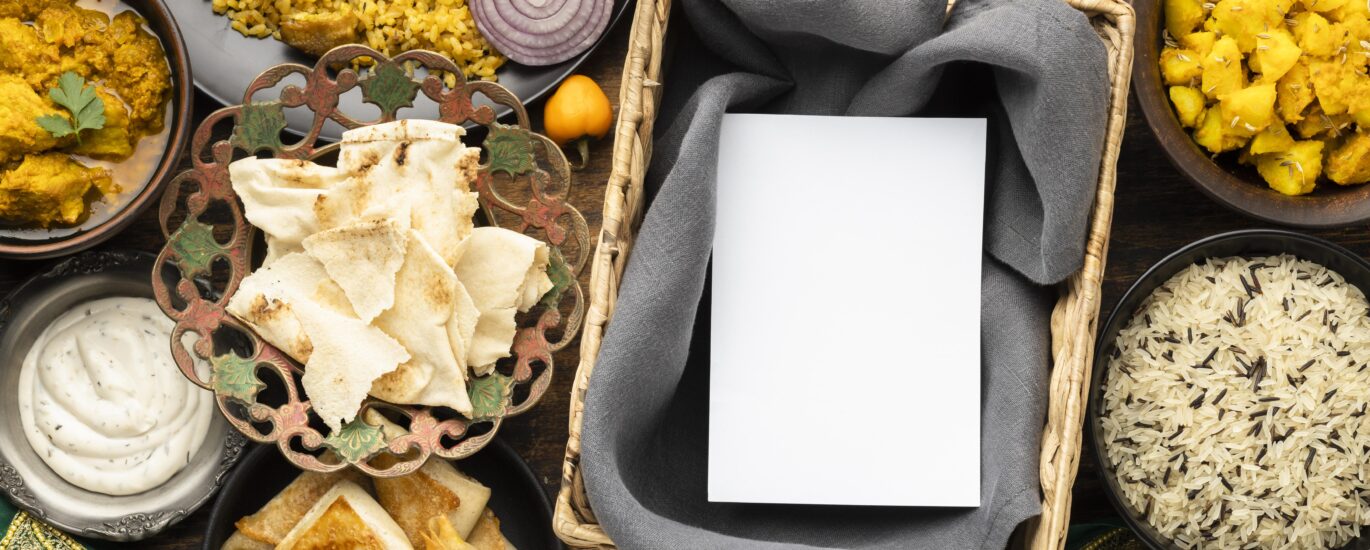Indian weddings are not just about vibrant colors, elaborate ceremonies, and joyous celebrations; they also showcase a rich tapestry of culinary delights from different regions of the country. Each region in India boasts its unique food traditions and specialties that add a flavorful dimension to the wedding festivities. In this blog post, we’ll delve into the diverse and delicious regional cuisines served at Indian weddings, exploring the culinary heritage that makes these events truly memorable.
Introduction
Step into a world of gastronomic wonders with “Culinary Delights: Regional Wedding Food Specialties,” a captivating exploration of the diverse and delectable dishes that grace wedding celebrations around the globe. From sumptuous Indian feasts to elegant French delicacies, this book invites you on a culinary journey filled with flavors, traditions, and heartwarming stories behind each dish. Whether you’re a food enthusiast, a culinary connoisseur, or simply curious about the rich tapestry of wedding cuisines, this collection promises to delight your senses and deepen your appreciation for the cultural significance of food in celebrations of love and union.
Indian Wedding Food Tradition
Indian wedding food traditions are a vibrant tapestry woven from diverse regional cuisines and centuries-old culinary customs. These weddings are not just celebrations of union but also feasts for the senses, where food plays a central role. The traditional Indian wedding menu is a lavish spread that showcases a plethora of flavors, colors, and textures, reflecting the rich cultural heritage of the country. From delectable appetizers like samosas and pakoras to aromatic main courses such as biryanis, curries, and kebabs, every dish tells a story of tradition, family recipes passed down through generations, and the skillful art of blending spices to perfection. The feast often includes vegetarian delicacies like paneer tikka, dal makhani, and vegetable korma alongside non-vegetarian delights like tandoori chicken, butter chicken, and fish curry, ensuring there’s something to please every palate. Desserts hold a special place, with sweet treats like gulab jamun, rasgulla, and kheer symbolizing happiness and prosperity. The serving style is equally important, with meals often presented in a buffet or served family-style on banana leaves or traditional thalis, adding a touch of authenticity and warmth to the dining experience. Indian wedding food is not just about sustenance; it’s a culinary journey that celebrates love, togetherness, and the vibrant tapestry of Indian culture.
Historical Background
Indian wedding feasts have evolved over centuries, influenced by historical events, trade routes, and cultural exchanges. Traditional cooking techniques and recipes have been passed down through generations, preserving the authenticity of regional cuisines.
Cultural Significance
Food holds immense cultural significance in Indian weddings, symbolizing hospitality, abundance, and familial bonds. It reflects the values and traditions cherished by different communities across the country.
North Indian Wedding Delicacies
North Indian weddings are a sumptuous affair filled with a myriad of delectable delicacies that reflect the region’s rich culinary heritage. From the vibrant streets of Delhi to the royal kitchens of Rajasthan, the gastronomic journey during these celebrations is nothing short of a feast for the senses. The traditional wedding spread boasts an array of mouthwatering dishes such as fragrant biryanis and pulaos adorned with aromatic spices like saffron and cardamom, tender tandoori kebabs marinated in yogurt and spices, and creamy paneer delicacies like paneer tikka and paneer butter masala that melt in your mouth. The menu also features rich curries like butter chicken and dal makhani simmered to perfection, accompanied by freshly baked naan and roti to mop up every last bit of flavor. Sweet indulgences are aplenty with desserts like decadent gulab jamun, creamy rasgullas, and delicate kheer, providing a delightful end to the culinary extravaganza. Each dish not only tantalizes the taste buds but also embodies the warmth and hospitality that are integral to North Indian culture, making every bite a celebration of love and togetherness.
Main Courses
- Biryani: A fragrant rice dish layered with succulent meats or vegetables, infused with aromatic spices.
- Paneer Tikka Masala: Grilled cottage cheese cubes simmered in a rich tomato-based gravy with spices.
- Dal Makhani: Creamy lentils slow-cooked with butter and spices, a staple in Punjabi cuisine.
Snacks and Appetizers
- Samosas: Crispy pastry filled with spiced potatoes or minced meat, served with tangy chutneys.
- Pakoras: Deep-fried fritters made from chickpea flour and various vegetables or meats.
Desserts
- Gulab Jamun: Soft milk solids dumplings soaked in sugar syrup, a classic Indian sweet.
- Rasgulla: Spongy cottage cheese balls cooked in sugar syrup, popular in Bengali cuisine.
South Indian Wedding Feasts
South Indian wedding feasts are a magnificent display of culinary excellence, showcasing a rich tapestry of flavors, textures, and traditions. These feasts are characterized by an extravagant spread of dishes that reflect the diverse cultural heritage of the region. Starting with appetizers like crispy vadas, savory samosas, and spicy pakoras, the feast progresses to a delightful array of main courses such as aromatic biryanis, flavorful curries like chicken chettinad and vegetable korma, and a variety of dosas and idlis accompanied by tangy chutneys and sambar. The vegetarian offerings are just as tantalizing, featuring dishes like avial, a creamy coconut-based curry with mixed vegetables, and kootu, a comforting blend of lentils and vegetables. The meal is rounded off with sweet treats like creamy payasam, fluffy gulab jamuns, and melt-in-your-mouth mysore pak, leaving guests with a lasting impression of South India’s culinary opulence and hospitality.
Unique Dishes
- Dosa: Thin, crispy crepes made from fermented rice and lentil batter, served with savory fillings.
- Hyderabadi Biryani: A fragrant rice dish layered with marinated meat or vegetables, perfected in Hyderabad’s kitchens.
- Avial: A mixed vegetable dish cooked in coconut and yogurt gravy, a Kerala specialty.
Traditional Sweets
- Payasam: A creamy dessert made with milk, rice, and sugar, flavored with cardamom and nuts.
- Mysore Pak: A rich, fudge-like sweet made from gram flour, ghee, and sugar, originating from Karnataka.
Beverages
- Filter Coffee: Strong, aromatic coffee brewed with a traditional filter, a favorite in Tamil Nadu and Karnataka.
- Buttermilk: Refreshing and cooling, perfect to balance the spices in South Indian cuisine.
East Indian Wedding Gastronomy
East Indian wedding gastronomy is a vibrant tapestry of flavors, colors, and aromas that reflect the rich cultural heritage and diverse culinary traditions of the region. From elaborate appetizers like samosas, pakoras, and kebabs to sumptuous main courses featuring aromatic biryanis, spicy curries, and tandoori specialties, every dish is a celebration of culinary craftsmanship and tradition. The use of exotic spices such as cardamom, turmeric, cumin, and saffron adds depth and complexity to the dishes, creating a symphony of flavors that tantalize the taste buds. Vegetarian delicacies like paneer tikka, dal makhani, and aloo gobi are equally popular and showcase the artistry of combining fresh ingredients with time-honored cooking techniques. Desserts play a pivotal role in East Indian weddings, with delights like gulab jamun, rasgulla, and kheer providing a sweet finale to the feast. The presentation of these dishes is also a work of art, with intricate plating and garnishes that elevate the dining experience to a visual delight. Overall, East Indian wedding gastronomy is not just about food—it’s a journey that celebrates love, tradition, and the joy of coming together in shared culinary delight.
Influences and Varieties
- Fish Curry: Spicy and tangy curries made with fresh catch from the Bay of Bengal, a staple in Bengali cuisine.
- Pitha: Assorted rice cakes and dumplings, sweet or savory, enjoyed during festive occasions in Assam and Odisha.
Must-Try Delights
- Chingri Malai Curry: Creamy prawn curry cooked with coconut milk and spices, a Bengali delicacy.
- Litti Chokha: Baked wheat-flour balls served with mashed vegetables, a traditional dish from Bihar.
West Indian Wedding Food Extravaganza
Welcome to the West Indian Wedding Food Extravaganza, a vibrant celebration of culinary delights that showcases the rich and diverse flavors of the Caribbean. Picture a feast fit for royalty, where every dish tells a story of tradition, love, and celebration. Start your journey with appetizers bursting with tropical flavors like spicy Jamaican patties, crispy fried plantains, and savory saltfish fritters. Dive into the main course, where fragrant curries reign supreme—whether it’s tender goat curry from Trinidad, aromatic chicken curry from Guyana, or creamy seafood curry from Barbados, each bite is a symphony of spices. Savor the smoky goodness of jerk chicken and pork, expertly grilled to perfection and served with a side of tangy mango chutney. Indulge in mouthwatering sides like coconut rice and peas, fried dumplings, and callaloo—a nutritious green vegetable stew that is a staple at every West Indian gathering. And no celebration is complete without the sweet finale—delight in decadent desserts like rum-infused black cake, coconut tarts, and refreshing sorrel drink to toast to a lifetime of happiness. This culinary extravaganza is not just a meal; it’s a sensory journey that captures the essence of West Indian culture and hospitality, leaving you with memories as flavorful as the dishes themselves.
Fusion of Flavors
- Vada Pav: Mumbai’s iconic street food featuring a spicy potato fritter sandwiched in a soft bun.
- Goan Fish Curry: Tangy and aromatic curry made with fresh fish, coconut milk, and spices.
Signature Dishes
- Dhokla: Steamed fermented rice and chickpea flour cakes, light and fluffy, a Gujarati specialty.
- Pav Bhaji: Spiced vegetable mash served with buttered bread, a beloved street food from Maharashtra.
Street Food Specials
- Pani Puri: Crispy hollow puris filled with spiced tangy water and potato filling, a favorite snack across the region.
- Kathi Rolls: Grilled wraps filled with marinated meats or paneer, onions, and chutneys, originating from Kolkata.
Modern Trends in Indian Wedding Cuisine
Modern trends in Indian wedding cuisine have undergone a significant transformation, blending traditional flavors with innovative culinary techniques to create a diverse and enticing experience for guests. From interactive food stations offering live cooking demonstrations to fusion menus that combine Indian spices with international cuisines, such as Mexican-Indian fusion tacos or Indo-Chinese noodle bowls, the options are endless. Health-conscious choices like organic, gluten-free, and vegan dishes are gaining popularity, reflecting a shift towards wellness and sustainability. Additionally, themed menus inspired by different regions of India or specific historical eras add a storytelling element to the dining experience, enhancing the overall ambiance of the wedding festivities. The use of exotic ingredients, artisanal presentation, and personalized menus tailored to guest preferences further elevate the culinary journey, making modern Indian wedding cuisine a delightful fusion of tradition, creativity, and global influences.
Fusion Foods
- Sushi Samosas: A fusion of Japanese sushi and Indian samosas, marrying flavors from different culinary traditions.
- Quinoa Pulao: A healthier twist to traditional rice dishes, incorporating superfoods like quinoa.
Health Conscious Choices
- Salad Bars: Offering a variety of fresh greens, fruits, and dressings, catering to health-conscious guests.
- Gluten-Free Options: Accommodating dietary restrictions with gluten-free bread, rotis, and desserts.
International Influences
- Mediterranean Platters: Featuring hummus, falafel, and pita bread, adding a Mediterranean touch to the buffet spread.
- Asian Stir-Fries: Incorporating stir-fried vegetables and meats with Asian sauces and spices.
Conclusion
In conclusion, exploring the diverse array of regional wedding food specialties has been a delightful journey into the heart of cultural richness and culinary craftsmanship. From the aromatic spices of Indian cuisine to the savory elegance of French delicacies and the comforting warmth of Mexican fare, each region’s unique flavors and traditions have added an extra layer of joy and celebration to weddings worldwide. These culinary delights not only satisfy the palate but also serve as a meaningful connection to heritage, fostering a sense of unity and appreciation for the rich tapestry of global culinary experiences. Cheers to the vibrant flavors and shared moments that make wedding feasts a truly unforgettable part of life’s cherished celebrations.












